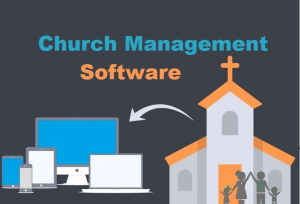From Spreadsheets to Software: Embracing Automation for a Thriving Church and a Connected Community
For generations, the heart of church administration often beat to the rhythm of handwritten ledgers, meticulously crafted spreadsheets, and the well-worn path of paper-based processes.
From tracking member contact details to tallying weekly offerings and coordinating volunteer schedules, these manual methods, while familiar and perhaps even comforting, can inadvertently become anchors, weighing down the very mission they intend to support.
In today’s rapidly evolving digital landscape, the transition from these traditional tools to automated church administration software isn’t just a technological upgrade – it’s a strategic evolution that can unlock unprecedented efficiency, foster deeper connections within the congregation, and ultimately empower a more impactful ministry.
The shift from physical records to digital platforms might initially seem like a leap of faith, fraught with the perceived complexities of new systems. However, the reality is that embracing automation offers a powerful pathway to streamlining operations, reclaiming valuable time for ministry-focused activities, minimizing human error, enhancing data security, and cultivating a more engaged and connected church community.
Let’s delve deeper into the limitations of manual administration and explore the transformative potential of dedicated church management systems (ChMS).

From Spreadsheets to Software
The Hidden Costs and Frustrations of Manual Church Administration
While there’s a certain tangible comfort in pen and paper, the inefficiencies and hidden costs associated with manual church administration can subtly erode the effectiveness of your ministry:
- The Relentless Drain on Time and Resources: Imagine the hours spent manually entering member information into multiple spreadsheets, cross-referencing attendance records for various ministries, painstakingly calculating and preparing financial reports, or individually emailing updates to different groups within the congregation. These repetitive tasks consume significant staff and volunteer time that could be better invested in pastoral care, community outreach, or developing enriching programs.
- The Inevitable Spectre of Human Error: We are all fallible. Typos in crucial contact details can lead to missed communication. Miscalculations in financial records can create discrepancies and mistrust. Lost attendance sheets can skew participation data and hinder effective follow-up. These human errors, while unintentional, can have tangible negative consequences.
- The Siloed Nature of Disparate Data: When vital information resides in isolated spreadsheets, scattered across various computers, or buried in filing cabinets, gaining a holistic understanding of your congregation becomes a monumental task. Generating comprehensive reports that reveal meaningful trends – such as engagement levels across different age groups or giving patterns over time – becomes a laborious and often incomplete process.
- The Bottleneck in Communication and Coordination: Reaching out to specific segments of your congregation – perhaps parents of youth group members or volunteers for an upcoming event – can become a time-consuming exercise in managing multiple email lists or making individual phone calls. Coordinating events, managing registrations, and tracking participation without centralized tools can feel like herding cats.
- The Constraints on Scalability and Growth: As your church community expands, the limitations of manual processes become increasingly apparent. What was manageable with a smaller congregation can quickly become overwhelming, potentially hindering your ability to effectively minister to a growing flock and implement new initiatives.
- The Underrated Risks to Data Security and Privacy: Paper records are susceptible to loss, damage (fire, water), and unauthorized access. Even unprotected spreadsheets on personal computers can be vulnerable to cyber threats or accidental deletion, raising concerns about the security and privacy of sensitive member information.

From Spreadsheets to Software
Stepping into a Brighter Future: The Multifaceted Benefits of Automated Church Administration Software
The adoption of a well-chosen church management system (ChMS) offers a powerful and multifaceted solution to these challenges, ushering in an era of greater efficiency, connectivity, and impact:
- Reclaiming Precious Time for Ministry: Automation acts as a tireless administrative assistant, taking over repetitive tasks like data entry, attendance tracking (often through seamless check-in systems), donation processing with automated acknowledgements, and the generation of insightful reports. This liberation of time allows pastors, staff, and volunteers to refocus their energy on the core mission of the church – nurturing spiritual growth, building relationships, and serving the community.
- Elevating Accuracy and Fortifying Data Integrity: Centralized databases inherent in ChMS platforms, coupled with automated validation processes, significantly minimize the risk of human error. Accurate and up-to-date records ensure reliable communication, precise financial management, and a trustworthy foundation for decision-making.
- Building a Unified View of Your Congregation: A ChMS acts as a central hub for all essential church data, providing a 360-degree view of each member’s involvement, giving history, participation in ministries, and communication preferences. This holistic perspective empowers church leaders to identify trends, understand needs, and tailor outreach efforts for greater impact.
- Empowering Seamless and Targeted Communication: Integrated communication tools within ChMS platforms – such as customizable email campaigns, SMS messaging for timely updates, and dedicated group communication channels – streamline outreach efforts. You can easily connect with specific demographics, ministry teams, or event attendees, fostering a stronger sense of belonging and facilitating effective coordination.
- Simplifying and Securing Financial Stewardship: Automated donation tracking, online giving platforms, pledge management, and comprehensive reporting features simplify the often-complex task of financial administration. This not only improves accuracy and transparency but also provides valuable insights into giving trends and facilitates better financial planning. Robust security features within reputable ChMS platforms also safeguard financial data and donor privacy.
- Orchestrating Events with Efficiency and Ease: From online registration and payment processing to automated reminders and attendance tracking, ChMS platforms streamline the entire event management lifecycle. This reduces administrative burden, improves participant experience, and provides valuable data on event engagement.
- Cultivating Deeper Member Engagement and Connection: By providing a clearer understanding of member involvement and facilitating personalized communication, a ChMS empowers the church to nurture stronger relationships within the congregation. Identifying individuals who might be disengaged or have specific needs becomes easier, allowing for timely and meaningful outreach.
- Strengthening Data Security and Ensuring Privacy: Reputable ChMS providers invest heavily in robust security infrastructure, employing encryption, access controls, and regular security audits to protect sensitive member data and comply with privacy regulations. This offers a significantly higher level of security than paper-based systems or unprotected spreadsheets.
- Laying a Scalable Foundation for Future Growth: Unlike manual processes that become increasingly cumbersome with expansion, well-designed ChMS platforms are built to handle growing volumes of data and increasing complexity. This provides a scalable infrastructure that can support your church’s growth and evolution.

From Spreadsheets to Software
Embarking on the Journey: A Thoughtful and Phased Transition
The prospect of transitioning to a new system might seem overwhelming, but a well-planned and phased approach can ensure a smooth and successful implementation:
- Conduct a Thorough Needs Assessment: Begin by engaging key stakeholders – pastors, staff, ministry leaders, and even representative volunteers – to identify the specific pain points your church faces and the functionalities you require in a ChMS.
- Diligent Research and Comparative Analysis: Explore the diverse landscape of ChMS providers. Compare features, pricing models, ease of use, customer support, and integrations with other tools your church utilizes. Request demos and actively participate in trial periods to gain firsthand experience.
- Foster Collaboration and Secure Buy-in: Involve your team in the selection and implementation process. Their input and enthusiasm are crucial for successful adoption. Clearly communicate the benefits of the new system and address any concerns.
- Develop a Comprehensive Data Migration Strategy: Plan how you will transfer your existing data accurately and efficiently. This might involve manual entry, data import tools provided by the software, or even engaging data migration specialists.
- Invest in Comprehensive Training and Ongoing Support: Ensure that all users receive thorough training on the new system. Choose a provider that offers ongoing support resources, including documentation, tutorials, and responsive customer service.
- Adopt a Phased Implementation Approach: Resist the urge to implement all features simultaneously. Begin with the core functionalities that address your most pressing needs and gradually roll out additional features as your team becomes comfortable with the system.
- Establish Clear Roles and Responsibilities: Define who will be responsible for managing different aspects of the ChMS to ensure accountability and efficient utilization.
- Regularly Evaluate and Optimize: Once the system is implemented, regularly assess its effectiveness and identify areas for optimization. Encourage user feedback and explore advanced features as your needs evolve.
Investing Wisely in Your Church’s Future
The adoption of automated church administration software represents more than just a technological expense; it’s a strategic investment in the future health and vitality of your church. The time and resources saved, the enhanced accuracy and security of data, the improved communication and engagement within your community, and the scalable infrastructure for growth all contribute to a more effective and impactful ministry.
Moving beyond the limitations of spreadsheets and manual processes is a bold step towards a brighter future for your church. By embracing the power of automation, you can free your team to focus on what truly matters – nurturing faith, building community, and making a positive impact on the lives of those you serve. The time to embrace this transformative change is now.

